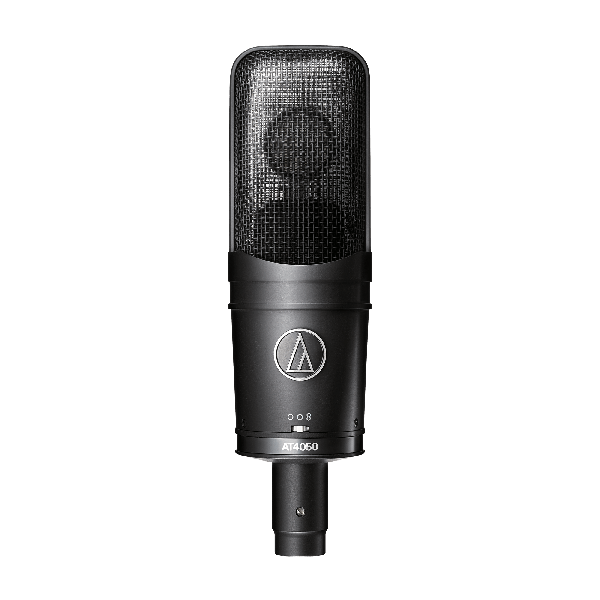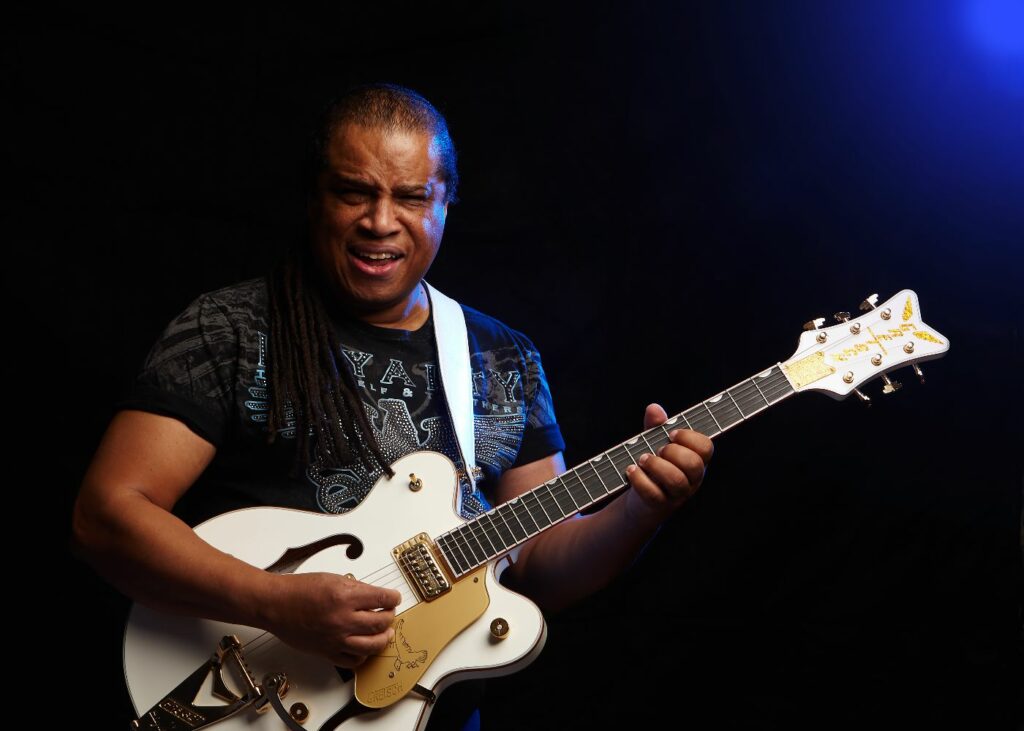
A much sought-after funk and rock guitarist, Nate Wingfield has played with the likes of B.B. King, Buddy Guy, and Brian McKnight, and has been a member of the Family Stone for well over a decade. He has also recorded three solo albums in the world music vein with his band Rhythm Tree. We caught up with Wingfield recently to learn more about his musical history and see what he’s been up to in these unprecedented times. Read our full interview with Wingfield below.
Can you begin by telling us a little bit about yourself?
I was born and raised in Philadelphia. I grew up in a time when the Philly scene was really happening. I had the opportunity to play with some of the artists that were really hot during the time, did some recording at some of the great studios there, and toured with some of the top Philly acts. Then I moved out to California where, when I was 20 or 21, I had a chance to go up for the guitar-playing gig with Stevie Wonder. That was interesting because he flew people in from all over the country. Ultimately, I became part of that clique. I didn’t tour – I was in a couple of rehearsals and things like that – but I made great friends with people who were part of that band and I went on to work and record with a lot of artists, like Brian McKnight, and did sessions with Irene Cara. I even did some recordings at the Jacksons’ Havenhurst house.
Then I went back to New York, and there were too many artists to mention that I was working with. It was a thing where I was bouncing back and forth between East and West Coast and starting to build a resume. In ’94 I moved to Vegas and that’s where I hooked up with drummer Frank Klepacki and bassist Blaise Sison, and started playing with a host of people in Vegas. We started the B.B. King All-Star Band where we played behind everybody from B.B. to Steve Cropper to Buddy Guy to Lee Ritenour. So it was a great experience. B.B. lived in Vegas at the time and would periodically show up and hang out. It was awesome just to be able to sit with the man and feel that B.B. energy.
Ultimately, I got the call for the Family Stone, which – talk about going full circle – was really the band that did it for me back in the day. I can’t even tell you what it meant to me to have the opportunity to play with this band. Even to this day, getting on stage with them is amazing. Sly would come out and sit in with us on a couple of sets. It was awesome.
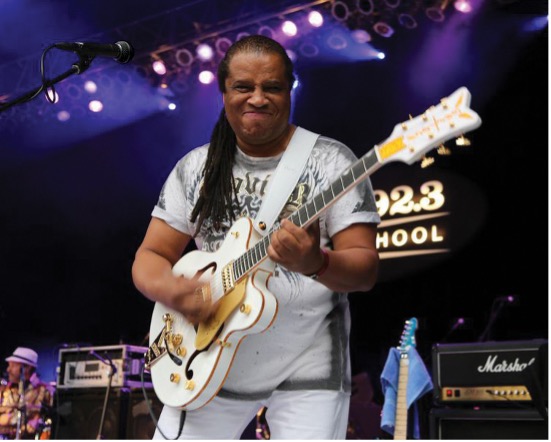
What inspired you to become a musician?
Growing up in Philadelphia, it was such a music town. When I was a kid, Bandstand was happening there with Dick Clark, then it was the sounds of Philadelphia with Gamble and Huff. One of the lead singers in the Delfonics used to live right down the street, so I got to see the guys that came and rehearsed with the band. And every now and then I’d see the bus that came and took the guys out on the road. I just thought that was so cool.
I started playing guitar when I was about 10 years old. It chose me, I didn’t choose it. And I was enamored with the guitar from that point on.
How did you get started with the Family Stone?
I came on board in 2006 or 2007. Whenever Blaise, Frank and myself talked about bands that really did it for us, Sly and the Family Stone was always the band. So one day I get a call from Blaise, who was already out working with them, and he’s like, Hey man, how would you like to work with the Family Stone? One of the guitar players was leaving the band, but I thought he was jiving me. He said, No, I’m serious. I’m going to send the material out to you along with a ticket. Be on the flight.
That first gig I did was in St. Petersburg, Florida, with Toto. But I asked Blaise, When do we get a chance to rehearse? He said, You don’t. Just dive into the material. And he told me how the set was going to work. So there I was on a plane, flying across the country to the band and, needless to say, the butterflies were in full effect. When I got into the airport and was coming down the escalator to the baggage claim, there they were, all sitting there waiting for me. It was surreal, man. And he was right, there was no rehearsal! We showed up to the outdoor venue, and there must have been 50,000 people out there. I had to jump into the deep end of the pool and swim. But because I loved that band so much and because I really loved the sound of that band, I already knew the texture of how the instruments should sound. I’d cut my teeth on this music. I might have played a little longer than I should have when my solo section kicked in [laughs], but, other than that, I made it through. And, in my opinion, if I only did that gig once I was cool. Well, luckily they embraced me, and now, going on 14 years later, I’ve toured the world with them and been involved in studio stuff, and they really have become my musical family. That’s how that worked out.
For any new listeners out there, how would you describe the Family Stone’s sound?
Let me put it this way: When we do our live show, our encore number is “Thank You (Falettinme Be Mice Elf Agin).” And I always say to the audience that when it comes down to groove, there are two people who are responsible for that – one is the Godfather of Soul, James Brown, and the second is Sly Stone. From those two artists we’ve gotten to know what funk is. The thing that was amazing about Sly was that his tastes were so eclectic that he was able to do funk, a sort of jazz tinge, psychedelic music, and rock ’n’ roll. And he mixed this brew – this stew – that pretty much changed how everybody approached an ensemble.
So before we go into the last number, I say we’re going to pay homage to Sly by playing the funkiest track ever put on wax, and we break into “Thank You.” That number really changed the game because the original bassist, Larry Graham, was the one who created the whole slap-and-pop bass – he’s one of the most influential bassists of the modern age. And Sly was Prince before Prince. He could play all the instruments, and his writing style was second to none. I saw him back in ’71, I think it was, when they played the Spectrum, and they rocked that room so hard that the audience up in the balcony was literally pulling the seats out of the cement to make dancing room – it was crazy. An article that came out in the Sunday paper after that show argued that the two most influential bands of the era were the Beatles and Sly and the Family Stone.
When Jimi Hendrix was in the process of passing away, Sly was landing in London to discuss doing an album with him. Miles Davis heard about it, and Miles was like, You’re not going to do this record unless I’m on it too. Cindy Blackman, the great drummer and Carlos Santana’s wife, told me that she’d heard that Paul McCartney had heard about it as well and said, You’re not going to do the project unless I’m involved too. Can you imagine what that would have been? The drummer who said the same thing was Tony Williams. So here you have Sly, Jimi Hendrix, Miles Davis, Paul McCartney and Tony Williams. Cynthia Robinson told me, I don’t know, it would have either been great or it might have been a fiasco. I said, Why? And she said, When you put that many geniuses in one room together, you don’t know what would happen. I think that probably would have been the greatest recording of all time.
So I would say Sly and the Family Stone is the beginning of the merging of soul, funk, gospel, psychedelia, and rock ’n’ roll. I think they’re the greatest funk band that was ever put together.
You also have released three solo albums, Rhythm Tree, When Love Is Pure, and Mystery Dance. How does your solo work differ from what you do with the Family Stone?
When I was a kid, I heard a Brazilian guitarist named Bola Sete, it was the Monterey Jazz Festival album, and this guy had a nylon-stringed guitar and played the score of the movie Black Orpheus. He sounded like four guys playing at once. That just blew me away. So my other passion is world music, and the albums I’ve done are sort of based on a Brazilian, world kind of thing. This gives me a chance to exercise that muscle as well. I can funk and rock with everybody, but at the same time I like to pull out a nylon and play some beautiful tones and great rhythms. The music is very intimate, it’s sexy, it has great emotion. So that’s been a big passion of mine.
The band on those records is called Rhythm Tree. I named the first album that as well. When I was in L.A. we were doing quite a bit with it. I put the records out, but then I’ve been running around and touring. I’m in the process now of writing a new album and once that’s complete and once all the chaos is done, then hopefully I can regroup that band and take it out when I’m not out with the Family Stone.
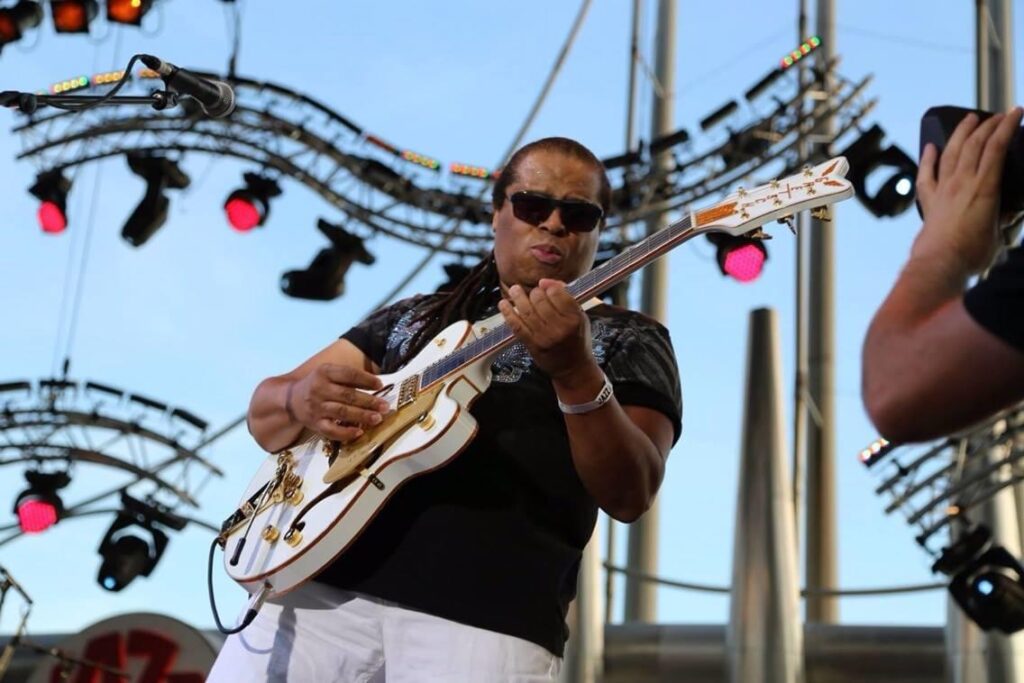
One of the things I have to say, I’m so disappointed that the System 10 Stompbox wireless was not a hit. Let me tell you a story on that that was so amazing. First, let me say, I think Audio-Technica is at the forefront of a lot of the tech that we as musicians and recording artists and engineers really rely on. But when we got those pedals, we were using them here in the States, and we played every venue from stadium dates to club dates. And even in those stadium dates the pedal carried a great distance, it was so convenient – you put it on the floor, you plugged it in, and you’d go. But the real test happened when we went to England and played Glastonbury. Now, when we hit the stage in Glastonbury, on the side of the stage there was a wall of wireless units that they were using with all the bands that were playing. Those shows are quick turnover, so the stages are pretty much set up and formatted so they can interchange bands and get them up and going. Some of the bands would bring in their own gear, but that would kind of slow things down. So when the techs there asked us what kind of units we’d like to use, I said, Well, we have our own, and they immediately had a panicked look on their faces. There are at least 10 stages there, so RF is a major worry. But I said, Trust me, there’s no need to worry. We were sharing the bill with George Clinton and P-Funk and they had their units as well. But since the Stompboxes were so small, the tech guys just mistook them for pedals. We kicked into that show and there was not one bit of RF in there – no interference whatsoever. On a massive stage in a festival like that. When we finished the show, the techs came over and were like, What is that? I said it’s a System 10 pedal. And they could not believe that that basic-looking pedal could rock an audience of about 100,000 people with no radio frequency interference. I’m madly in love with that pedal and we wanted to get our singer/keyboardist Swang one, but I’ve heard there are no more! That Stompbox was ahead of its time.
You guys have been so supportive with the mics that we’re using and the wireless units that singers Phunne and Swang are using. I have the AT4050 mic. I love that microphone. So I can’t say enough. When we do our gigs now, we bring our own A-T mics and set them up. The clarity – the way those mics cut – is unbelievable. They just cut so beautifully in the house mix. Show engineers are concerned about having to re-EQ, but when we plug them in they’re blown away by the clarity and the punch. We’re tickled to death with that.
We know this pandemic has been stressful for so many musicians. What have you been doing to keep busy and creative?
I’m doing some remote recording for artists that have album projects going and they need some guitar tracks and whatnot. The beautiful thing about technology today is that someone can send me a demo track, I can upload it into my system, cut my guitar track, save it to a WAV or AIFF file, and send it back to the producer. And everyone else does the same thing – bass, drums, etc. – so it’s sent back to the producer and engineer on that particular session and they put it all together and it’s like everybody’s been together in the studio. The beautiful thing now is that you can literally record with people all around the world. And I prefer it that way, particularly now with the whole COVID thing going on, because I’m in my own studio and I can cut tracks at my own convenience and not be worried about time. I can really listen to a track, improve it, edit it, and send it out feeling confident that it should give them what they’re looking for. And if they still need something else, they can hit me up and I can go back and rework it.
And you’re working on a new project of your own?
Yeah, I’ve started writing, working to put that together. One thing about all this great downtime is that it gives your creative juices a chance to really flow. I’m a vampire, I’m up all night anyways. I sit up in the middle of the night, no distractions, and I write and put stuff down. So that’s where I’m at right now. And I’m pretty excited about getting that next project out.
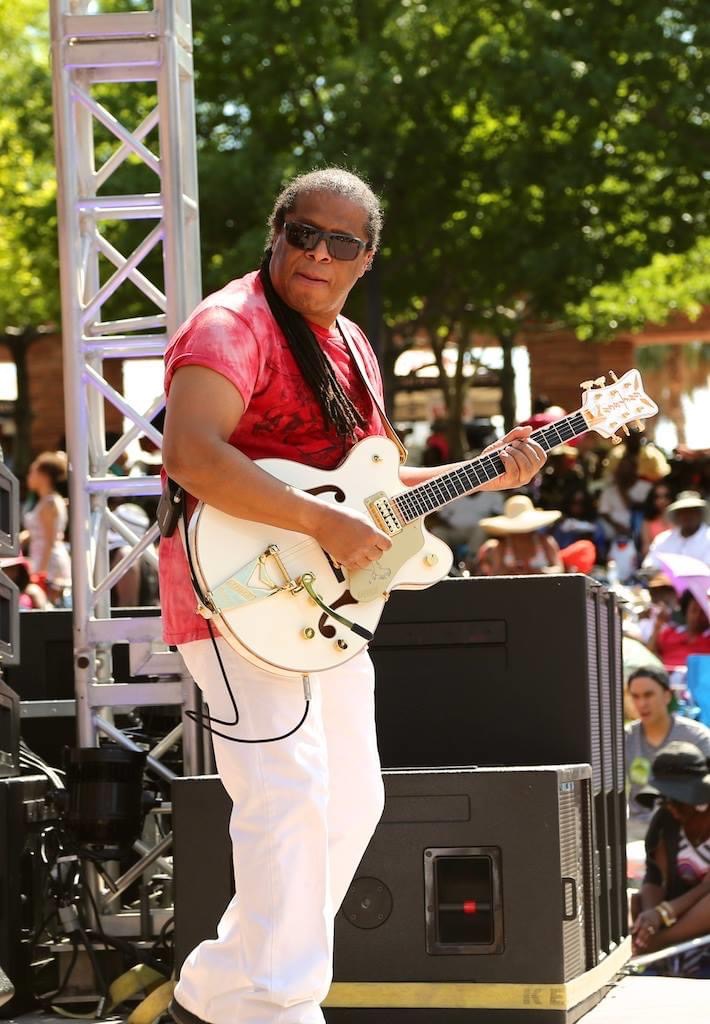
As someone who’s recorded extensively and toured all over the world, what advice would you give to aspiring musicians?
One thing I encourage, and am actually very proud to see in so many young players now, is to be serious about learning the craft. At one point I was a little discouraged because we were in an era where it was just a push-button thing. Everybody was just pushing buttons. I remember one time going to NAMM and they were selling Guitar Hero, and I was worried at that point because I was like, man, kids are not interested in playing. But I will say, with Instagram and whatnot, there are some amazing guitar players that I see – I mean youngsters – that are just phenomenal players. So I would encourage young people to really listen not just to music of their own generation, but to go back and listen to the creative flow that the masters put down. And I think some of them are beginning to do that, because I’ve heard some players who play rather maturely for being in their twenties, or even in their teens, and sound like they’ve been playing for 20 or 30 years – 40 years. So I would just say: Learn the craft. Don’t pick up the instrument for fame and money, pick it up for the love of the music. All that other stuff will come, or it won’t – it’s all nebulous – but what’s in your hand is what you’re creating, and that’s the best advice I can give them. Network, play as much as you can. Unfortunately, with this pandemic, the jam sessions and things that normally would happen are on hold right now, but you do see online all of these Zoom things that are happening now. So people are still trying to find a way to get their point of expression out.
How can people stay in touch with you and The Family Stone?
You can check out my Facebook page, @natewingfieldmusic, and keep up with the Family Stone at thefamilystoneband.com.
